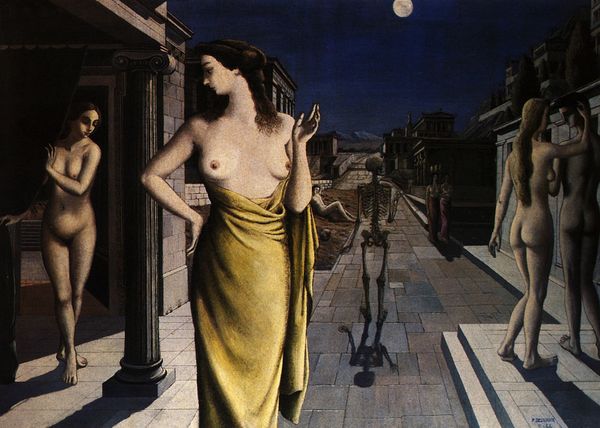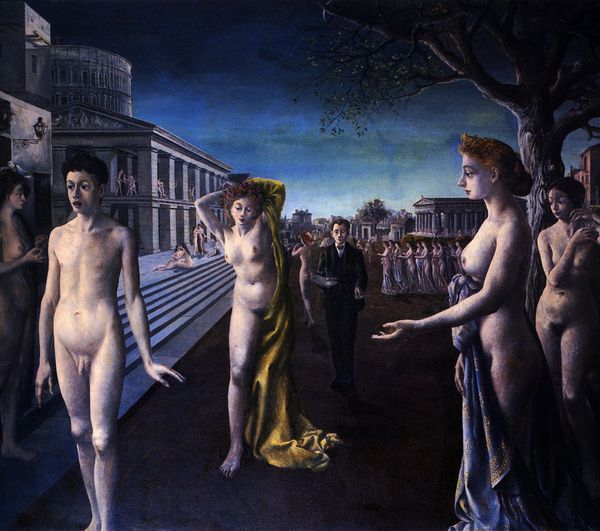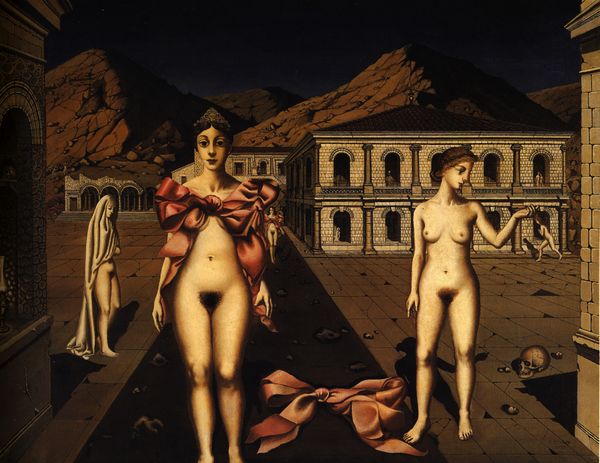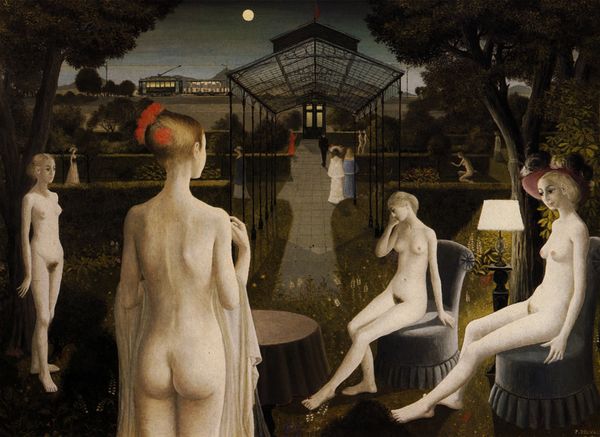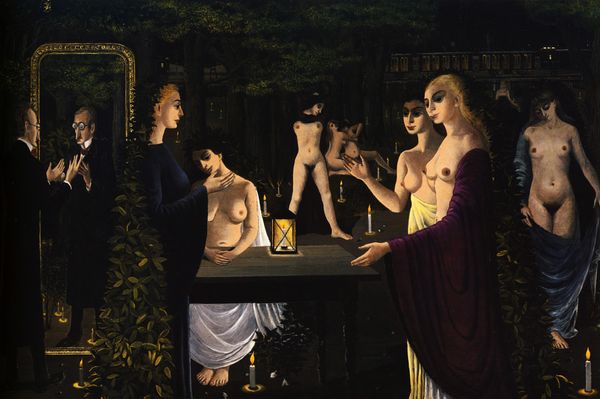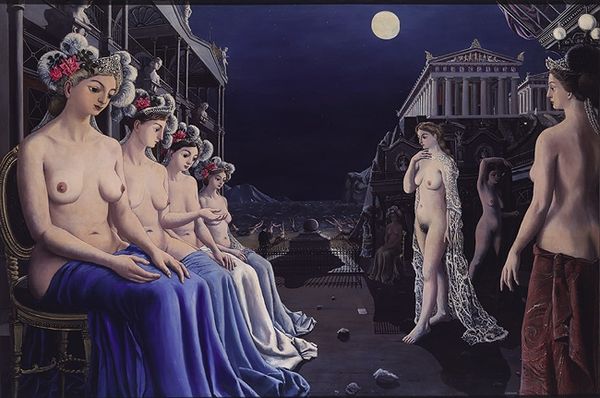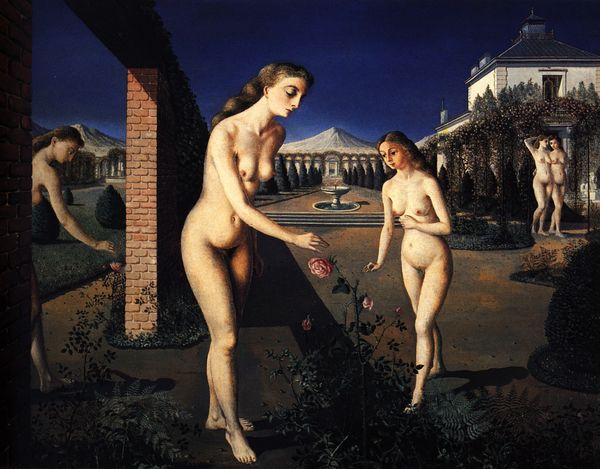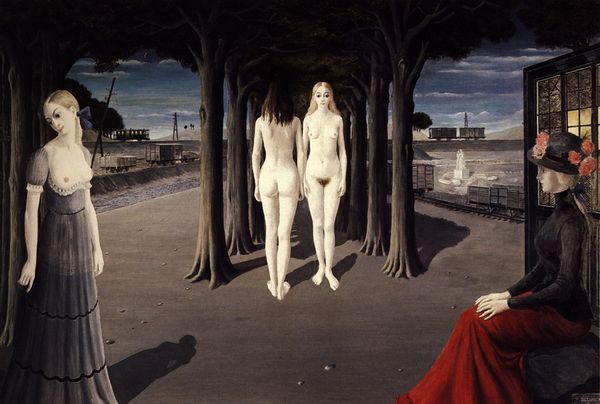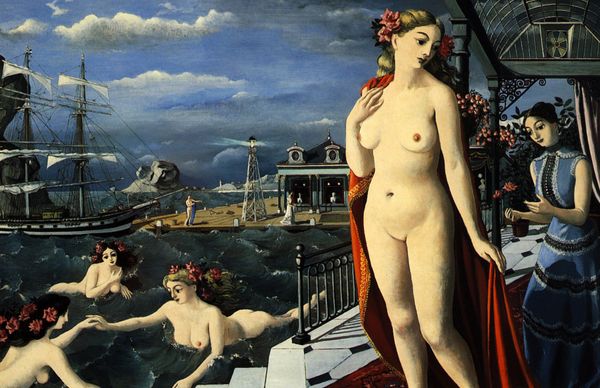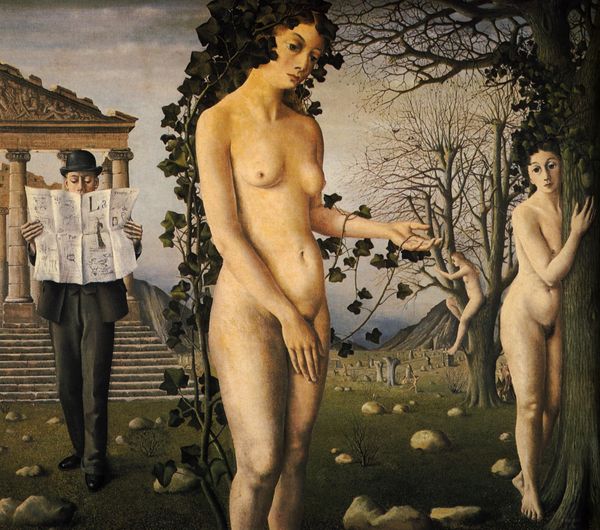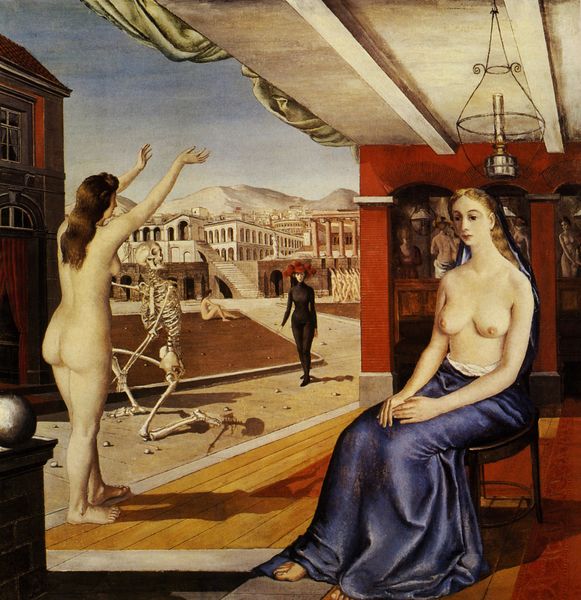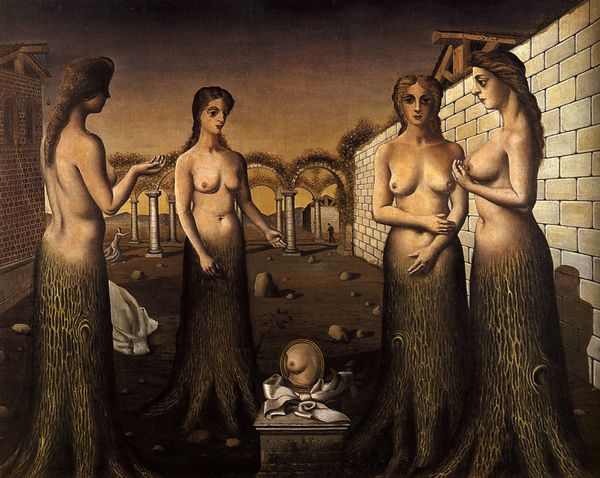
painting, oil-paint
#
painting
#
oil-paint
#
landscape
#
figuration
#
female-nude
#
mythology
#
human
#
nude
#
surrealism
Dimensions: 170 x 190 cm
Copyright: Paul Delvaux,Fair Use
Curator: Strolling through a dreamscape, we find ourselves before Paul Delvaux's 1940 oil painting, "The Entrance to the City." Editor: It’s oddly still, isn’t it? A twilight stage filled with these nude figures, almost like sculptures brought to life. Melancholy tinged with a strange expectancy. Curator: The painting showcases Delvaux's signature surrealist style. Note how he intertwines classical architecture, symbolic nudes, and everyday elements to evoke a timeless yet unsettling atmosphere. This recurring motif of his really does play with the intersection of reality and the unconscious. Editor: Unsettling is right! This blending of nudity with such ordinary actions, like reading the newspaper—it jars you. What do you make of that lone man in a suit, amidst this all? Is he even seeing what we're seeing? Curator: Perhaps the figure in a suit functions as an “everyman,” blind to the ancient echoes that Delvaux evokes. In psychoanalytic terms, consider how the repetition of figures amplifies certain anxieties or desires lurking beneath our consciousness. He could embody a repressed viewer. Editor: Repressed indeed! I keep thinking of those Italian piazzas, these endless promenades. But then there's this pervasive sense of detachment, of figures lost in their own worlds even when physically close. Like emotional distances mapped in open spaces. Curator: Yes, and within art history, Delvaux references classical mythology and art. By subverting those traditional images, it can represent a deeper psychological unrest and our search for meaning. The nudity can also relate to a return to a prelapsarian state of innocence. Editor: Prelapsarian is an interesting perspective, with that single, dark-suited figure casting a long shadow in paradise. The stark juxtaposition leaves you grappling with the notion that maybe, paradise itself is not always what it seems. Curator: Absolutely. In its haunting, dreamlike quality, it offers us, just as it offered Delvaux’s contemporary viewers a reflective pause, urging one to question the narratives of history and consciousness. Editor: So, "The Entrance to the City" is less an entry and more an echo chamber, bouncing back fragments of ourselves and history. Gives you something to think about long after you've left the gallery, doesn’t it?
Comments
No comments
Be the first to comment and join the conversation on the ultimate creative platform.
